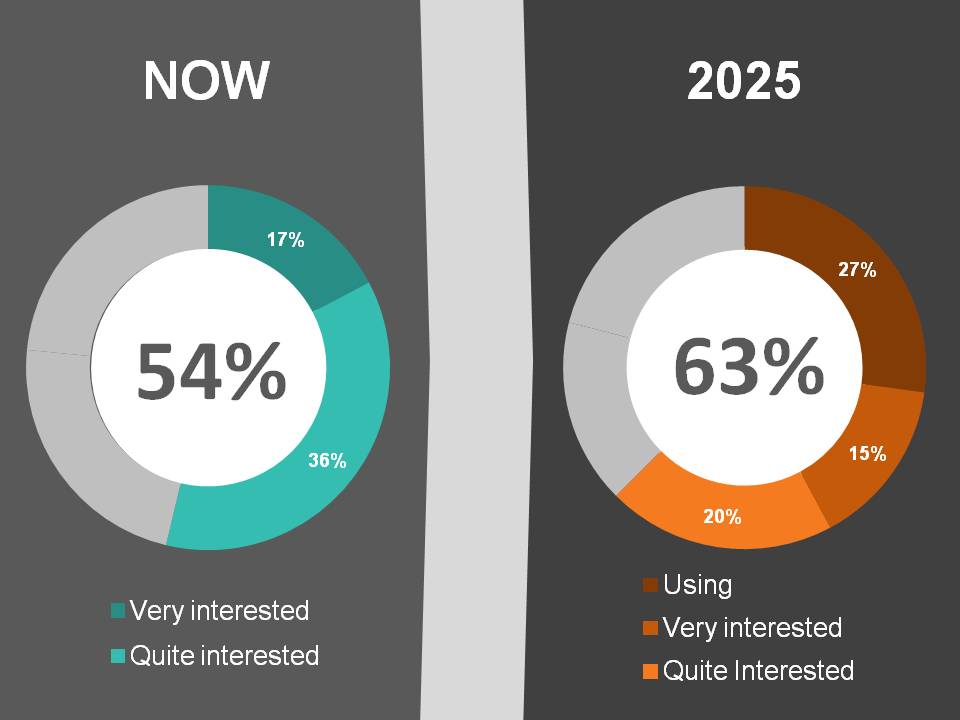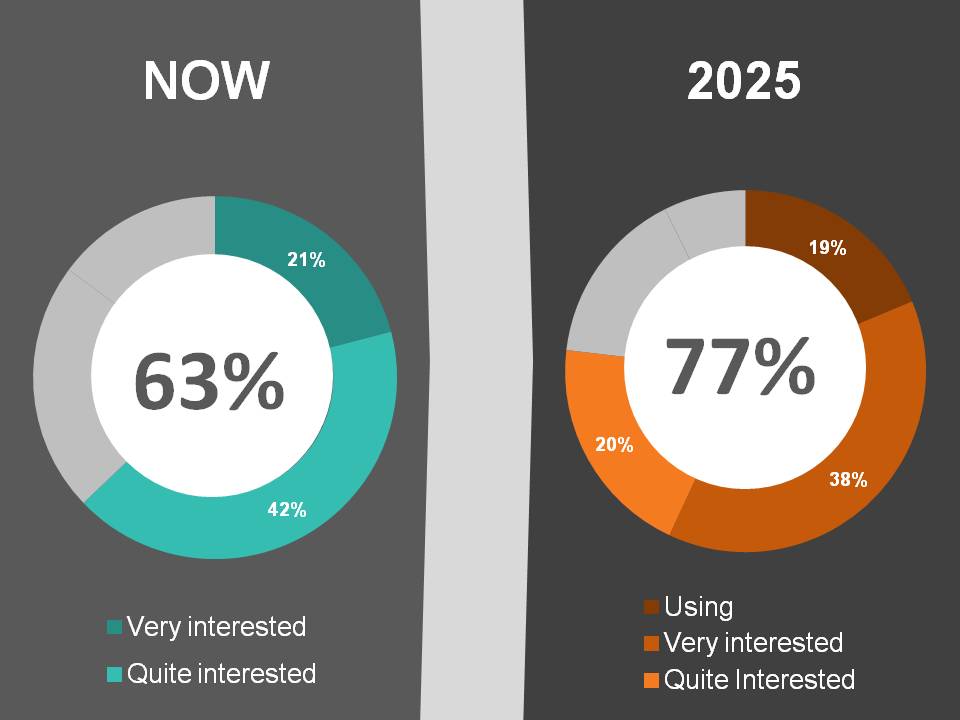If you’ve been following our blog for a while now or you’re a subscriber to our data and trends platform FFonline, you might have come across some of our data forecasts and predictions. The latter is unique to us and used where we have trended stats around emerging trends and innovations to find out just how popular something will be in 2020 or 2025. Read on to discover three of these and how consumer data can predict usage and interest in new technology, in the future.
Any excuse to have a celebration
Celebration is an innate need and one we expect to intensify, backed by the spread of globalisation and the increasing impact and influence of social media on our lives. Foresight Factory’s trend Everyday Exceptional describes how consumers are revelling in re-interpretations of celebrations not necessarily rooted in their own religious practices, national traditions or local cultures. Even national holidays can have an international appeal.

We predict that by 2025, 53% of global consumers will agree or agree strongly that they love “any excuse” to have a celebration. Impacting this are lifestyle factors like the desire to try new foods and explore new restaurants, the appeal of socialising and out-of-home leisure experiences, as well as the social status boost that surrounds sharing these moments. 65% of people claim to eat out at least once a month “as an occasion”, presenting ample commercial opportunity for leisure, food and beverage and alcohol brands in particular, to be part of these positive experiences.
In Shanghai, Alibaba and Starbucks opened a 30,000 square-foot retail location named the Starbucks Reserve Roastery. Visitors are encouraged to use their mobile devices as a way to discover more about the space and the brand through augmented reality, by pointing their device at features within the roastery. As the “first fully immersive coffee wonderland in China”, the mega coffee shop embeds brand storytelling and excitement into an everyday ritual.
Biometric payments
A number of incumbent and challenger banks have now introduced biometric payment methods, and we expect to see their adoption grow as consumers become accustomed to the technology. Cashless Society is a trend we’ve been tracking since 2009. An emerging strand of innovation within the trend explores the rise of invisible commerce, where physical checkouts and the payment process itself are phased out, as payment is taken automatically as shoppers leave stores (both IRL and online).
In this near future, devices and biometric identifiers make consumers’ digital identities instantly recognisable to retailers, making transactions completely seamless.

We predict that 63% of consumers in Sweden, Germany, China, UK and the USA will be using fingerprint payment or interested in doing so by 2025. Influencing our data prediction are a number of factors, including the uptake of mobile payment and ownership of biometric payment-enabled devices. Uptake of biometrics will also be driven by the need to control password fatigue and find one-stop solutions that can act as universal identity verifiers.
The traditionally cash-reliant country of Japan is championing widespread biometric payment, set to roll out for the Tokyo 2020 Olympic Games. Upon arrival, guests will receive the option to scan their fingerprints and link them to their debit or credit card, after which they can scan-to-pay in venues, such as restaurants, hotels and souvenir shops. Capitalising on a global event to introduce the flexibility and ease of biometric payments is an avenue for financial services brands to explore.
DNA tailored health advice
We record significant interest in personalised health advice based on an individual’s DNA profile. We expect interest to evolve into actual usage of services by 2025, which at present remain niche but are developing a commercial presence. Behind this is The Me Me World, a trend that explores how data is bringing about hyper-personalisation, catering to each customer as an individual. 
77% of consumers will be interested in or using DNA tailored health advice in 2025. Unsurprisingly, interest in such services rises with income – current iterations of direct-to-consumer genetic tests are relatively expensive, and for many may seem like a luxury. Although, some insurance companies are already exploring rolling them into their policies.
The beauty and health industry are already innovating in this arena: British beauty brand GENEU offers at-home DNA tests to tailor skincare products and has introduced service U+ for in-store analysis. The user is provided with a swab to supply the DNA material for the test, as well as a lifestyle questionnaire to complete, allowing GENEU to offer bespoke advice and recommendations. DayTwo from Israel provides nutritional recommendations based on an analysis of an individual’s microbiome. The company sends users an at-home kit to provide a stool sample and complete a questionnaire, before sequencing their microbiome. Users receive the analysis and specific information around food choices via a personalised app. A seamless experience, and how well data analysis is tailored and conveyed to the consumer, will be key for such services reaching mainstream appeal, but so too will transparency around how data is stored and used by brands.
Now for the technical part…
Foresight Factory predictions provide a view of future consumer interest and usage across innovation spaces.
Our method? Using our global survey data, we uncover the most influential factors that correlate with current engagement; depending on the topic this can include demographics, attitudes, behaviours or personality traits. Alongside these primary motivators, we consider emerging trends that are likely to influence uptake in the future, even if there isn’t a very strong relationship today. And finally, we overlay contextual data, such as economic forecasts and Google Trends to understand the markets most suited to adoption. Only from the amalgamation of all these indicators we’re able to identify the consumers who are most likely to be interested and become users/owners by the forecast date.
Interested in what else we do? Find out more about how to ask the right questions in research.